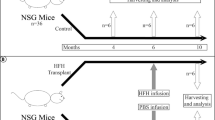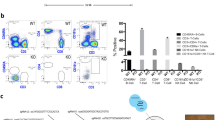Abstract
To investigate the feasibility and efficacy of liver gene therapy mediated by intrasplenic transplantation of genetically modified hepatocytes, the normal mouse liver cell line BNL CL. 2 cells were introduced with Neo-resistant (NeoR) gene or interleukin-2 (IL-2) genein vitro, and transplanted intrasplenically into normal syngeneic mice (2 x 106 cell/mouse); subsequently, the expressions of the introduced genesin vim were detected. The RT-PCR results showed that NeoR mRNA expressions were detectable in livers 24 h after transplantation and lasted over 11 weeks. Moreover, The NeoR mRNA was detected to be expressed temporarily in spleens (24 h–1 week) and lungs (24–96 h) after transplantation. After intrasplenic transplantation of IL-2 gene-modified BNL CL.2 cells, the stable expressions of IL-2 mRNA in the livers of transplanted mice were detectable by RT-PCR (24 h–11 weeks), and certain levels of IL-2 (5–40 pg/mL) remained in the peripheral blood. When IL-2 gene-modified BNL CL. 2 cells were transplanted intrasplenically to treat the metastatic liver colon carcinoma-bearing mice, the survival time of the treated mice was significantly prolonged. The data indicate that intrasplenic transplantation of genetically modified hepatocytes could allow for oriental distribution in host livers and long-term survival of the transplanted liver cells, and effective expression of exogenous genesin vim, suggesting that this can be a candidate approach to liver-directed gene therapy.
Similar content being viewed by others
References
Strauss, M., Liver-directed gene therapy: prospects and problems,Gene Ther., 1994, 1: 156.
Wilson, J. M., Grossman, M., Raper, S. E.et al., Ex vivo gene therapy of familial hypercholesterolemia,Hum. Gene Ther., 1992, 3: 179.
Gupta, S., Aragona, E., Vemuru, R. P.et al., Permanent engraftment and function of hepatocytes delivered to the liver: implications for gene therapy and liver repopulation,Hepatology, 1991, 14: 144.
Gupta, S., Yerneni, P. R., Vemuru, R. P.et al., Studies on the safety of intrasplenic hepatocyte transplantation: relevance toex vim gene therapy and liver repopulation in acute hepatic failure,Hum. Gene Ther., 1993, 4: 249.
Cao Xuetao, Zhang Weiping, Tao Qunet al., Enhanced immune functions and antitumor activity of fibroblast-mediated IL-2 gene therapy,National Medical Journal of China (in Chinese), 1995, 75(9): 521.
Mise, M., Arii, S., Higashitsuji, H.et al., Augmented local immunity in the liver by a streptococcal preparation, OK432, related to antitumor activity of hepatic macrophages,Immunopharmacol, 1994, 27: 31.
Zhang Weiping, Cao Xuetao, Gu Shenet al., Augmented natural killer cytotoxicity by human interleukin-6 gene-transfected fibroblasts.Chinese Journal of Hematology (in Chinese), 1994, 15: 300.
Rosenberg, S. A., Aebersold, P., Cprnetta, K.et al., Gene transfer into humans—immunotherapy of patients with advanced melanoma, using tumor-infiltrating lymphocytes modified by retroviral gene transduction,N: Engl. J. Med., 1990, 323: 570.
Vemuru, R. P., Yermemi, P., Aragona, E.et al., Survival and function of hepatocytes in ectopic sites: intrasplenic delivery confers advantages,Hepatology, 1991, 14: 49A.
Author information
Authors and Affiliations
Additional information
Project supported by the National Natural Science Foundation of China.
Rights and permissions
About this article
Cite this article
Zhang, W., Cao, X., Huang, X. et al. In vivo distribution and gene expression of genetically modified hepatocytes after intrasplenic transplantation. Sci. China Ser. C.-Life Sci. 40, 554–560 (1997). https://doi.org/10.1007/BF03183596
Received:
Issue Date:
DOI: https://doi.org/10.1007/BF03183596




